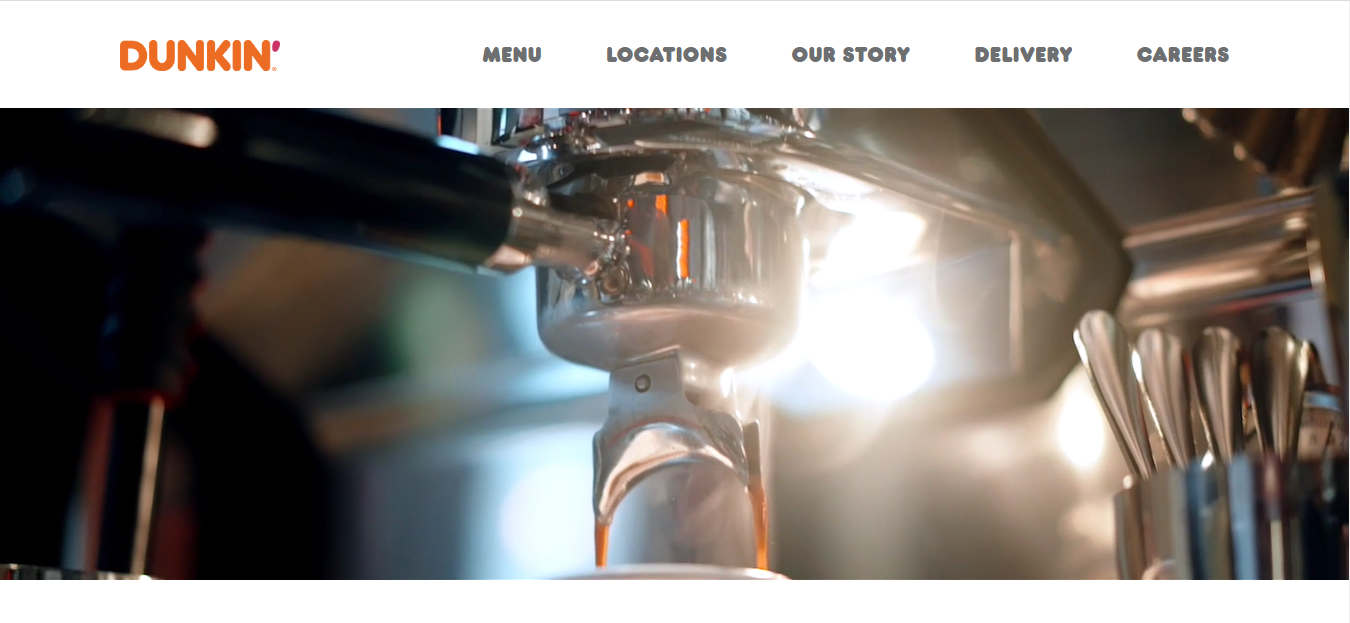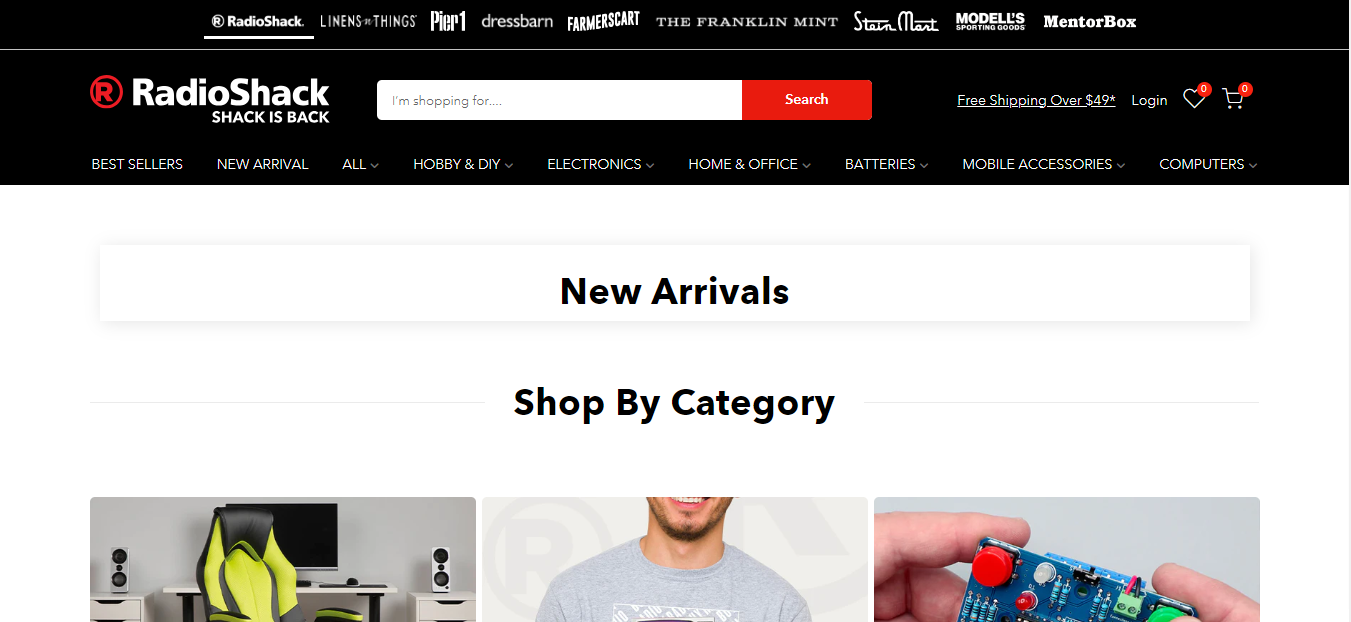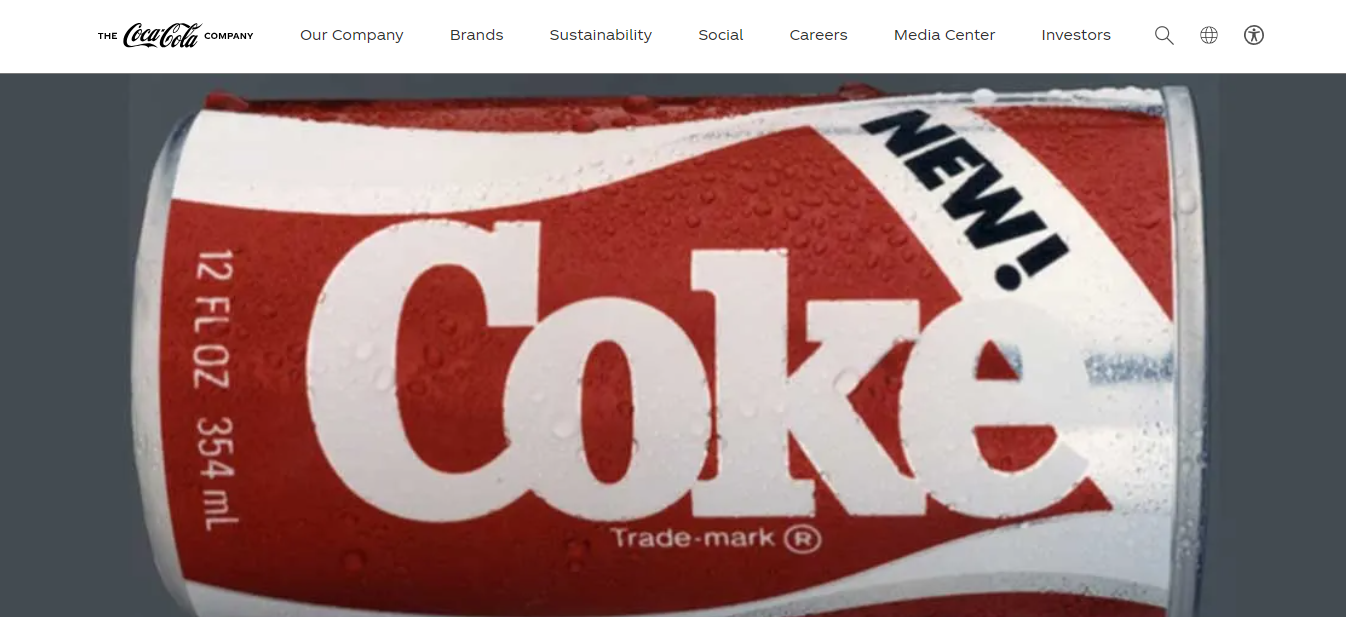3 Rebranding Examples – What Makes a Successful Rebrand?
What Makes a Successful Rebrand?
When Is a Good Time for a Rebranding?
3 Successful Rebranding Examples
Rebranding examples serve as compelling testaments to the transformative power of strategic repositioning and reinvention within the business world.
In today’s dynamic business landscape, companies must adapt and evolve to stay relevant and capture the attention of their target audience.
Rebranding has emerged as a powerful tool to rejuvenate a company’s image, reposition its brand identity, and connect with customers in new and exciting ways.
However, the path to successful rebranding is not without its challenges.
In this article, we explore the key elements that contribute to a successful rebranding strategy.
In conclusion, showcasing inspiring examples of companies that have achieved remarkable transformations.
What Makes a Successful Rebrand?

A successful rebrand encompasses several key elements that contribute to its effectiveness.
Here are the essential factors that make a rebranding effort successful:
Clear Objectives

A successful rebrand begins with well-defined objectives.
Companies must identify the specific goals they aim to achieve through the rebranding.
Similarly, such as attracting a new target audience, refreshing their brand image, or expanding into new markets.
Clear objectives provide direction and ensure that the rebranding efforts align with the desired outcomes.
Example
In 2013, Airbnb embarked on a rebranding journey to reflect its transformation.
From a platform for short-term rentals to a global travel community.
They introduced a new logo, inspired by the concept of belonging.
In conclusion, encapsulating the company’s core values and vision for the future.
Thorough Research and Analysis

In-depth research and analysis are crucial to understanding the market landscape, target audience preferences, and competitive positioning.
This includes conducting market research, competitor analysis, and customer surveys to gain insights into consumer perceptions, needs, and trends.
A thorough understanding of the market allows companies to make informed decisions and tailor their rebranding strategy accordingly.
Example
In 2014, McDonald’s faced declining sales and a disconnected brand image.
Through extensive research, they discovered a growing consumer demand for healthier food options.
McDonald’s responded by introducing a more contemporary logo, revamping store designs, and offering healthier menu choices.
Their rebranding efforts aligned with the changing preferences of their target audience and helped reverse the negative trend.
Brand Identity and Positioning

Successful rebranding involves redefining or reinforcing the brand’s identity and positioning.
Companies must articulate their unique value proposition and differentiate themselves from competitors.
This includes developing a compelling brand story, establishing a strong brand personality, and identifying the brand’s core values.
Aligning the brand’s identity and positioning with the needs and aspirations of the target audience creates a strong connection and fosters brand loyalty.
Example
In 2015, Google announced its transformation into Alphabet, a holding company overseeing various subsidiaries.
This rebranding effort involved active engagement with employees.
Similarly, explaining the rationale behind the change and providing a sense of continuity and direction.
Google’s rebranding was successful because it effectively communicated the strategic shift to both internal and external stakeholders.
Consistency and Coherence

A successful rebrand requires consistency and coherence across all brand touchpoints.
This includes visual elements such as logo, typography, color palette, and design aesthetics, as well as messaging, tone of voice, and customer experience.
Consistency builds trust and recognition, reinforces the brand’s identity, and ensures a cohesive brand experience across different channels and interactions.
Example
In 2010, Old Spice embarked on a rebranding campaign that targeted a younger audience.
They launched the famous “The Man Your Man Could Smell Like” advertising campaign.
However, featuring humorous and engaging commercials that quickly became viral sensations.
Old Spice successfully aligned its messaging with the desired perception of its new target market.
In other words, leading to a substantial increase in sales.
Effective Communication

Communication plays a vital role in the success of a rebrand.
Companies must develop a comprehensive communication strategy to effectively convey the reasons behind the rebranding.
Transparent and authentic communication with all stakeholders, including employees, customers, investors, and partners, helps build trust, manage expectations, and generate support for the rebranding effort.
Example
In 2019, Slack, a communication and collaboration platform, introduced a new logo that faced significant backlash from its user base.
Recognizing the importance of listening to its users, Slack responded swiftly and iterated on its rebranding.
They actively engaged with their community, sought feedback, and made adjustments based on the valuable insights received.
This flexibility and willingness to adapt not only addressed user concerns but also demonstrated their commitment to providing an exceptional user experience.
Measurable Metrics

To gauge the success of a rebrand, companies should establish measurable metrics to track and evaluate the impact of the rebranding efforts.
These metrics may include changes in brand awareness, customer perception, market share, customer acquisition, sales, and overall business performance.
Example
In 2012, Yahoo underwent a rebranding that involved redesigning its logo.
To generate excitement and engage its user base, Yahoo decided to unveil 30 variations of its new logo over 30 days, leading up to the final reveal.
This creative implementation strategy generated buzz, successfully capturing the attention of both existing and potential users.
Regular monitoring and analysis of these metrics provide insights into the effectiveness of the rebrand and allow for necessary adjustments and refinements.
However, by considering these essential factors and executing them strategically.
In conclusion, companies can achieve a successful rebrand that revitalizes their brand image, resonates with their target audience.
When Is a Good Time for a Rebranding?

Deciding on the right time for a rebranding is a critical strategic decision for a company.
While there is no one-size-fits-all answer, here are some situations that often indicate a good time for a rebranding:
Evolving Market Conditions

Changes in the market landscape, such as emerging trends, shifts in consumer behavior, or new technological advancements, may necessitate a rebrand.
However, if your current brand no longer aligns with the evolving needs and expectations of your target audience.
In conclusion, a rebranding can help you stay relevant and capture new opportunities.
Mergers or Acquisitions

When two companies merge or one company acquires another, a rebranding can be a way to create a unified brand identity that reflects the combined strengths and values of the entities involved.
It helps facilitate a smooth transition, eliminate confusion, and establish a cohesive brand presence in the marketplace.
Company Growth or Expansion

If your company has experienced significant growth or is planning to expand into new markets, a rebranding can support your strategic objectives.
It allows you to position your brand effectively in new territories, appeal to a broader audience.
Brand Perception Issues

However, negative brand perception, outdated brand image, or a disconnect between the brand and its target audience can warrant a rebranding.
In conclusion, A fresh start can help change perceptions, rebuild trust, and rejuvenate the brand’s image, leading to increased customer engagement and loyalty.
Competitive Pressures

In other words, intense competition or the entry of disruptive players in the market may require a rebranding to differentiate your company and stand out from the crowd.
In conclusion, a rebrand can help you reposition your brand, emphasize your unique value proposition, and regain a competitive edge.
Organizational Changes

Significant internal changes, such as a change in leadership, strategic direction, or company culture, may call for a rebranding.
It enables you to reflect the new vision, values, and aspirations of the organization and align the brand with the internal transformation.
Outdated Visual Identity

If your brand’s visual identity, including the logo, color scheme, or overall design, looks outdated or fails to resonate with the target audience, it might be a good time for a visual refresh.
A modern and visually appealing brand identity can enhance your brand’s perception and help you connect with contemporary consumers.
Ultimately, the decision to rebrand should be driven by a comprehensive assessment of your business objectives, market dynamics, and brand performance.
It is important to conduct thorough research, seek input from key stakeholders, and carefully evaluate the potential benefits and risks before embarking on a rebranding journey.
What Is Brand Recognition?

Brand recognition refers to the ability of consumers to identify and associate a brand with its specific products, services, or overall identity.
It is the level of awareness and familiarity that consumers have with a brand when they encounter its visual or verbal cues
This includes the brand name, logo, tagline, or packaging.
Brand recognition is an important aspect of brand equity and plays a significant role in influencing consumer behavior and purchase decisions.
When consumers can recognize a brand, it signifies that the brand has successfully established itself in the marketplace and has created a distinct identity that resonates with its target audience.
There are two primary components of brand recognition:
Brand Recall

Brand recall refers to a consumer’s ability to retrieve a particular brand from memory when prompted with a product category or a specific cue.
For example, when asked about a specific soft drink brand, a consumer who can recall “Coca-Cola” demonstrates brand recall.
This shows that the brand has made a lasting impression and is easily retrievable in the consumer’s mind.
Brand Familiarity

Brand familiarity measures how well consumers are acquainted with a brand.
It indicates the degree of exposure and recognition a brand has achieved among its target audience.
Familiarity can be influenced by various factors such as marketing efforts, advertising campaigns, product availability, and consumer experiences.
The more familiar a brand is to consumers, the higher the likelihood of being chosen when making a purchase decision.
Brand recognition is essential for several reasons:
Competitive Advantage

Brands with high recognition have a competitive edge over their competitors.
When consumers are familiar with a brand, they are more likely to choose it over unfamiliar brands.
This recognition gives established brands an advantage in capturing market share and acquiring new customers.
Trust and Credibility

In conclusion, brand recognition contributes to building trust and credibility.
Similarly, familiarity creates a sense of reassurance and reliability among consumers.
However, brands that are recognized and trusted are more likely to attract and retain customers, as consumers associate them with quality, consistency, and positive experiences.
Brand Extension

Strong brand recognition enables successful brand extensions.
When a brand is well-recognized and carries a positive reputation, it becomes easier to introduce new products or enter new market segments.
Consumers are more open to trying new offerings under a familiar brand, increasing the likelihood of acceptance and success.
Word-of-Mouth and Referrals

Brand recognition often leads to positive word-of-mouth recommendations and referrals.
When consumers recognize and trust a brand, they are more likely to share their experiences with others, recommend the brand to friends and family, or engage in online discussions.
This organic advocacy further strengthens the brand’s reputation and attracts new customers.
Building brand recognition requires consistent brand communication, targeted marketing efforts, and delivering memorable experiences.
Brands achieve recognition through, advertising campaigns, social media presence, public relations activities, while maintaining a strong brand identity.
In conclusion, brand recognition is the level of awareness and familiarity that consumers have with a brand.
However, it plays a crucial role in shaping consumer perceptions, driving customer preference, and establishing a competitive advantage.
In conclusion, building and maintaining brand recognition is a strategic priority for businesses seeking long-term success and customer loyalty.
3 Successful Rebranding Examples
Dunkin’s Rebrand Drops The Donuts

For instance, in a bold move to refresh its image and broaden its appeal, Dunkin’ Donuts, the popular American coffee and doughnut chain, recently underwent a rebranding effort that involved dropping the iconic “Donuts” from its name.
The company’s decision to rebrand as simply “Dunkin‘” reflects its strategic shift towards emphasizing its beverage offerings and positioning itself as a destination for more than just doughnuts.
However, the decision to drop “Donuts” from the brand name was driven by several key factors.
Firstly, Dunkin’ Donuts recognized the evolving preferences and needs of its customer base.
By rebranding as Dunkin’, the company aims to convey that it is more than just a doughnut shop and can cater to a wider range of consumer preferences.
Additionally, the success of Dunkin’s rebranding can be measured by several factors.
For instance, one crucial aspect is consumer response and acceptance.
However, initial reactions to the rebranding were mixed, with some expressing nostalgia for the original name and others embracing the change as a necessary evolution.
Over time, customer feedback, market research, and sales data will provide insights into how the rebranding resonates with consumers and impacts the company’s performance.
Ultimately, Dunkin’s rebranding reflects the company’s strategic adaptation to changing consumer preferences and its desire to remain competitive in a dynamic market.
By dropping the donuts from its name and focusing on beverages, Dunkin’ aims to position itself as a modern, versatile brand that caters to a wide range of consumer tastes.
The success of this rebranding effort will be determined by how well the company’s new image resonates with its target audience and supports its business objectives in the long run.
Burberry’s Rebranding Magic

Burberry, the iconic British luxury fashion brand, is known for its timeless trench coats, distinctive check pattern, and rich heritage.
In recent years, the company has successfully undertaken a rebranding strategy that has revitalized its image, expanded its appeal to a younger demographic, and propelled its growth.
However, Burberry recognized the need to evolve and adapt to changing consumer preferences and market dynamics.
By embracing change and staying relevant, Burberry positioned itself as a modern luxury brand with a fresh perspective.
In conclusion, the company embraced social media, live streaming, and digital marketing campaigns to engage with a global audience.
Notably, Burberry became the first luxury brand to livestream its runway shows, giving viewers a front-row seat to its fashion events.
This digital transformation helped Burberry reach new customers and build a strong online presence.
While rebranding, Burberry stayed true to its core brand elements that define its identity.
Burberry demonstrated a commitment to social responsibility and sustainability, which resonated with the values of modern consumers.
The brand implemented initiatives to reduce its environmental impact, such as the Burberry Foundation and its dedication to responsible sourcing and manufacturing practices.
By aligning with the growing focus on sustainability, Burberry showcased its dedication to making a positive impact on society.
Burberry’s rebranding magic lies in its ability to transform and adapt while maintaining its core essence.
Through strategic evolution, digital innovation, iconic branding, engaging experiences, collaborations, sustainability initiatives, and global expansion, Burberry has reinvented itself and captured the attention and loyalty of a new generation of consumers.
The brand’s successful rebranding serves as a testament to its visionary leadership and its ability to stay ahead of the curve in the ever-changing fashion industry.
Google rebrand – Be mobile, consistent, and cross-platform friendly

In a recent rebranding effort, Google, the technology giant renowned for its search engine and vast array of digital products, has focused on being mobile, consistent, and cross-platform friendly.
This strategic move reflects Google’s commitment to optimizing user experiences across various devices and platforms while maintaining a cohesive brand identity.
The rebranding aims to streamline and enhance Google’s offerings while reinforcing its position as a leader in the digital space.
As mobile usage continues to dominate digital interactions, Google has prioritized a mobile-centric approach in its rebranding efforts.
Google’s rebranding strategy emphasizes the importance of consistency in its visual identity and user interface design across its diverse range of products and services.
By unifying the design elements, such as icons, typography, and color schemes, Google aims to create a cohesive and recognizable brand experience.
Consistency not only enhances brand recognition but also fosters familiarity and trust among users, regardless of the specific Google product they are using.
In an increasingly interconnected digital landscape, Google recognizes the importance of seamless integration and cross-platform compatibility.
The rebranding efforts focus on enabling users to transition effortlessly between different devices and platforms, such as smartphones, tablets, desktops, and wearables.
Google’s focus on user needs and preferences helps ensure that its products and services align with user expectations and provide a seamless and enjoyable experience across platforms.
Through its rebranding efforts, Google demonstrates a commitment to providing seamless experiences across platforms and devices, prioritizing user-centric design, and maintaining a consistent brand identity.
By focusing on mobile optimization, consistency, cross-platform integration, and user-friendly design, Google aims to enhance user experiences, foster brand loyalty, and solidify its position as a leading innovator in the digital realm.
4 Examples of Rebranding Failures

While rebranding can be a powerful tool for companies to revitalize their image and connect with their target audience, there have been instances where rebranding efforts have failed to achieve their intended goals.
Here are a few examples of notable rebranding failures:
Gap

In 2010, Gap, the popular clothing retailer, attempted to refresh its logo with a new design.
The new logo featured a simple, modern font and a blue square above the letter “p.”
The rebranding received significant backlash from customers and design professionals who criticized it for being generic and lacking the brand’s iconic identity.
After just one week, Gap decided to revert to its original logo due to the negative response.
Tropicana

In 2009, Tropicana, a leading juice brand, underwent a rebranding that aimed to give its packaging a more modern and minimalist look.
The redesign involved removing the familiar orange with a straw image and replacing it with a simple glass of juice.
The new packaging received widespread criticism from consumers who found it confusing and generic.
Tropicana faced a significant backlash and saw a decline in sales, prompting the company to revert to its original packaging design.
RadioShack

In an attempt to reposition itself as a modern electronics retailer, RadioShack underwent a rebranding in 2009 and introduced the name “The Shack” as a shortened version of its original name.
The rebranding was met with confusion and criticism as consumers viewed it as an unnecessary and unsuccessful attempt to be trendy.
The rebranding failed to revive the struggling company, and RadioShack eventually filed for bankruptcy in 2015.
New Coke

One of the most famous rebranding failures in history is the introduction of New Coke by The Coca-Cola Company in 1985.
The company decided to reformulate its classic Coca-Cola recipe and introduced New Coke as a sweeter alternative.
The new product faced a massive backlash from consumers who were deeply attached to the original Coca-Cola flavor.
The negative response led to public outrage and protests, eventually prompting Coca-Cola to reintroduce the original formula as Coca-Cola Classic just a few months later.
These examples highlight the importance of careful planning, market research, and understanding consumer preferences when undertaking a rebranding effort.
Failure to connect with the target audience, maintain brand identity, or respond to consumer feedback can lead to rebranding failures and damage a company’s reputation.
Successful rebranding requires a thorough understanding of the market, strategic decision-making, and effective communication to ensure that the rebrand resonates positively with consumers.
Conclusion

Successful rebranding is a delicate balance between preserving the essence of a company’s heritage and embracing the need for change and adaptation.
By envisioning a clear brand strategy, conducting thorough research, engaging stakeholders, and implementing a cohesive plan, companies can revitalize their image and connect with their target audience in a meaningful way.
The examples mentioned above highlight the power of rebranding done right, showcasing how it can lead to increased market share, customer loyalty, and long-term success in today’s competitive business landscape.
If you liked this article, consider reading another about Brand Perception here.
FAQ
Successfully navigating a complete brand overhaul requires careful planning, market research, and strategic decision-making.
It involves reevaluating the company’s positioning, target audience, and brand identity.
Key steps include identifying market trends, conducting consumer research, developing a clear brand strategy, aligning internal stakeholders, and implementing consistent and compelling messaging across all touchpoints.
Additionally, effective communication and engagement with customers throughout the rebranding process are vital for acceptance and success.
Establishing a new brand identity for a business can bring several key benefits.
It allows the company to differentiate itself from competitors and create a unique positioning in the market.
A new brand identity can help attract the attention of consumers and make a memorable impression, leading to increased brand recognition and recall.
